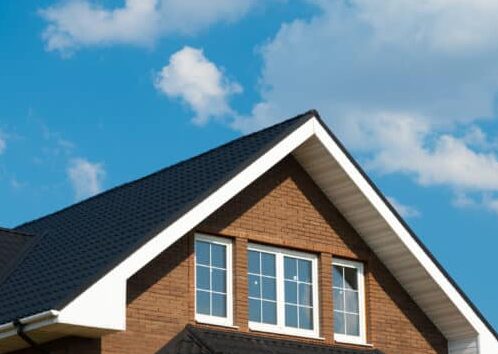
A pitched roof is a roof that slopes down, usually in two parts at an angle from a central ridge, but occasionally in one part, from one edge to another. The pitched roof system is a kind of roof which is employed in numerous cases. Before erecting a pitched roof for a structure, you must be acquainted with its pros and cons. Below, the advantages and disadvantages of the pitched roof are compactly explained.
Shaped like a triangle, they're firm and far more efficient when dealing with excessive weather, including heavy rain and snowfall. The roof blueprint helps to direct the water down from the home and leaves low-slung circumstance of water-logging.
The natural ventilation underneath the topmost roof layer significantly improves the thermal effectiveness of a structure. This ensures optimal inner solace both in winter and summer.
The structure envelope is accountable for around 25-35 loss of energy within a structure. Pitched roofs are erected to allow natural ventilation between the external layer and the structure, conserving energy.
The slanted structure of a pitched roof makes it harder to clean and examine than a flat roof. Still, there remains a persuasive argument that, in the long run, flat roofs frequently need further maintenance and this can be attributed to its lesser effective water drainage. This means that a flat roof can more fluently clog up drains. As a aftereffect, such a roof may create damage and leaks which could also pan out if the roof’s leakproof seal isn't regularly maintained.
Numbers reveals pitched roofs to be significantly pricier upfront than flat roofs. Nevertheless, if your regional area gets a lot of heavy downfalls, savings that you might originally make in resolving for a flat roof could afterward be offset by an unexpectedly high need for frequent roofing repairs. This would be due to the water evacuation effect with a flat roof. In light of this, a flat roof is commonly more prone to humidity damage in comparison to a pitched roof.
You'll be better served with a flat roof, if your habitat is complicated in structure. This is because, a more complicated rafter system is required for a pitched roof. You should also vigorously regard a flat roof if your structure has large spans. After all, for support, these big spans would otherwise need structure rafters that you could find prohibitively complicated, costly and impracticable.
The preference of roof depends on weather conditions and individual taste. Although these roofs have some downsides, pitched roofs are the most competent option for people residing in heavy rainfall and snowfall areas.
Contact us now at 519 Knickerbocker Ave, Brooklyn, NY 11221 (718)-285-7841 https://www.bushwickroofingny.com to install a pitched roof for you.
